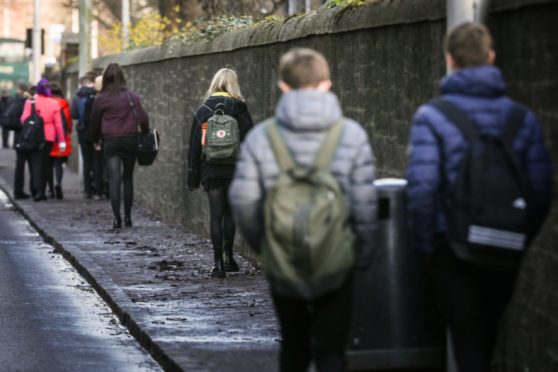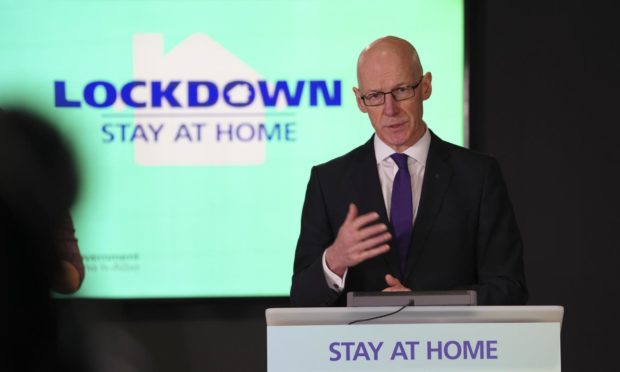The coronavirus pandemic has limited job opportunities for school leavers as data reveals the number of young people entering positive destinations has fallen.
However the number of school leavers enrolling in higher or further education courses has reached a record high of 72%.
The National Records of Scotland figures show 93% of pupils had a positive destination including work, training or further study within three months of leaving school last year, down from 95% in 2018/19.
The statistics also lay bare the toll Covid-19 has had on employment opportunities with 16% gaining employment compared to 22% in the previous year.
Education Secretary John Swinney says the pandemic has caused the decline in workplace prospects and school leavers were being supported to find a suitable positive destination.
Mr Swinney said: “Despite the challenges of Covid-19, it is heartening to see a continued high proportion of our pupils in positive destinations after leaving school, with a record percentage continuing in further and higher education.
“This year’s statistics clearly highlight the impact of the pandemic on young people, with a sizeable decrease in those entering employment reflecting the limited opportunities in the labour market.
“We are providing direct support to those affected through the Young Person’s Guarantee which gives every 16-24 year old a job, placement, training or volunteering opportunity.”
Shona Struthers, chief executive of Colleges Scotland, said the increase in college enrolment was “encouraging”.
More young people are also leaving school with qualifications, according to the official data.
The proportion of school leavers with one pass or more at National 5 or better is 85.7%, while those with at least one Higher has increased to 63.9%
Closing the poverty-related attainment gap and giving every young person the chance to fulfil their potential, regardless or their background, remains our defining mission.”
Mr Swinney added: “The data shows increases in the proportion of school leavers gaining one pass or more at SCQF Level 5 or better, SCQF Level 6 or better and SCQF Level 7.
“We also see a welcome increase in school leavers choosing vocational qualifications to develop wider skills for the world of work, with more than a fifth (22.5%) now achieving one or more vocational qualification at SCQF Level 5 or better, compared to 7.3% in 2013/14.”
The official measures of the attainment gap rose slightly over the past year however Mr Swinney said a higher percentage of school leavers from the most deprived background were receiving qualifications.
“Closing the poverty-related attainment gap and giving every young person the chance to fulfil their potential, regardless or their background, remains our defining mission.
“This commitment is a long term one, and we know the closure of schools and the cancellation of last year’s exams due to Covid-19 has impacted our progress and made that task harder.
“While official measures of the attainment gap rose slightly over the year, the proportion of leavers from the most deprived areas gaining one pass or more at a given level or better rose at most SCQF levels and the attainment gap is much smaller than it was in 2009/10.
“Over the last 10 years we have seen the gap close significantly at most SCQF levels with the difference in the proportion of school leavers achieving a pass at SCQF Level 6 (Higher or equivalent) or better among those from the least and most deprived areas decreasing by 9.6 percentage points compared to 2009/10.
“We have committed over £300 million in education recovery over this year and next, including to recruit additional teachers and support staff and address digital exclusion and I am determined to continue to support our young people through these unprecedented times.”











